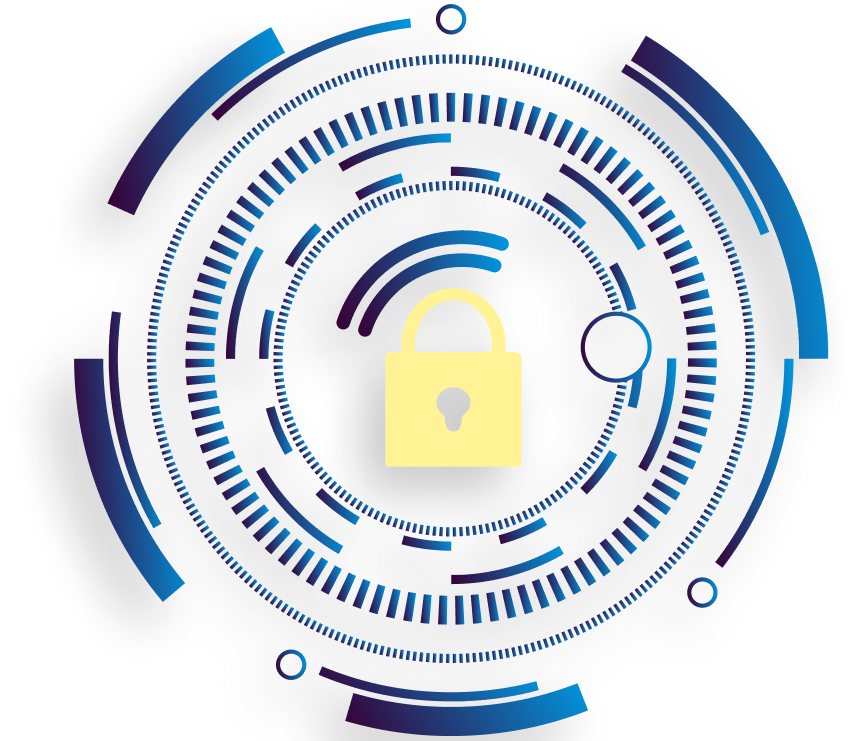Written by SONNY SEHGAL | CEO
Businesses of all sizes increasingly rely on technology and the Internet to operate and thrive. However, with this reliance comes the ever-present threat of cyber attacks, data breaches, and other malicious activities that can cripple a company’s operations and tarnish its reputation. This is where the concept of “cyber hygiene” comes into play – a set of best practices and proactive measures designed to safeguard an organisation’s digital assets and mitigate cyber risks. In this comprehensive blog post, we’ll explore What cyber hygiene is and why it should be a top priority for every organisation.
The Cyber Threat Landscape
Before we dive into the intricacies of cyber hygiene, it’s crucial to understand the severity of the cyber threat landscape. According to the 2022 Cybersecurity Ventures report, the global cost of cybercrime is expected to reach a staggering $10.5 trillion annually by 2025. This alarming figure underscores the urgent need for businesses to prioritise cyber hygiene and implement robust security measures.
Cyber attacks can take many forms, ranging from phishing scams and malware infections to distributed denial-of-service (DDoS) attacks and advanced persistent threats (APTs). These threats can lead to devastating consequences, such as data breaches, financial losses, operational disruptions, and reputational damage – all of which can severely impact a business’s bottom line and long-term viability.
What is Cyber Hygiene?
Cyber hygiene involves regular practices and measures to keep your systems clean and secure. These practices are similar to personal hygiene, like regular hand washing, but applied to digital security. They include updating software, using strong passwords, backing up data, and monitoring network activity. Good cyber hygiene is a proactive approach that reduces the risk of cyber attacks and data breaches.
The Key Practices of Cyber Hygiene
Cyber hygiene encompasses a wide range of practices and measures designed to fortify an organisation’s cybersecurity posture. Here are some of the key pillars of cyber hygiene that every business should prioritise:
1. Regular Software Updates and Patching
One of the most fundamental aspects of cyber hygiene is keeping all software, operating systems, and applications up-to-date with the latest security patches and updates. Cybercriminals are constantly on the lookout for vulnerabilities in outdated software, which they can exploit to gain unauthorised access or deliver malicious payloads. By promptly installing updates and patches, businesses can close these security gaps and significantly reduce their attack surface.
2. Strong Password Policies and Multi-Factor Authentication
Weak or compromised passwords are a common entry point for cyber attackers. Implementing strong password policies, such as enforcing complex password requirements and regular password changes, can go a long way in preventing unauthorized access. Additionally, implementing multi-factor authentication (MFA) adds an extra layer of security by requiring users to provide multiple forms of verification, making it much harder for attackers to gain access even if they have obtained a user’s password.
3. Employee Cybersecurity Awareness and Training
Human error is often cited as one of the leading causes of cyber incidents. Employees who lack proper cybersecurity awareness and training can inadvertently fall victim to phishing scams, social engineering attacks, or other malicious tactics. By investing in regular cybersecurity awareness and training programs, businesses can equip their employees with the knowledge and skills necessary to identify and mitigate potential threats, fostering a culture of cyber hygiene throughout the organization.
4. Robust Data Backup and Recovery Strategies
Despite best efforts, cyber incidents can still occur. In such cases, having a robust data backup and recovery strategy in place is crucial for minimizing downtime and ensuring business continuity. Regular data backups, coupled with tested recovery procedures, can help organizations quickly restore their systems and data in the event of a cyber attack, ransomware infection, or other disruptive events.
5. Continuous Monitoring and Incident Response Planning
Cyber threats are constantly evolving, and organizations must remain vigilant in monitoring their networks and systems for potential threats. Implementing continuous monitoring solutions and establishing an incident response plan can help businesses quickly detect and respond to cyber incidents, minimizing the potential impact and facilitating a swift recovery.
Learn how to Maintain Robust Cyber Hygiene Practices with Transputec
Connect us today for our free consultation!
The Benefits of Cyber Hygiene
Implementing robust cyber hygiene practices can yield numerous benefits for businesses, including:
1. Reduced Risk of Cyber Attacks
By adhering to cyber hygiene best practices, organisations can significantly reduce their exposure to cyber threats and minimise the likelihood of successful attacks.
2. Improved Regulatory Compliance
Many industries are subject to strict data protection and cybersecurity regulations, such as GDPR, HIPAA, and PCI DSS. Maintaining good cyber hygiene can help businesses demonstrate compliance and avoid costly fines and penalties.
3. Enhanced Reputation and Customer Trust
Data breaches and cyber incidents can severely damage a company’s reputation and erode customer trust. By prioritising cyber hygiene, businesses can demonstrate their commitment to protecting sensitive data and maintaining a secure environment, fostering customer confidence and loyalty.
4. Increased Operational Efficiency and Productivity
Cyber attacks can lead to system downtime, disruptions, and productivity losses. By implementing cyber hygiene measures, businesses can minimise these disruptions and ensure their operations run smoothly and efficiently.
5. Cost Savings
While investing in cyber hygiene may require upfront costs, the potential savings from avoiding costly data breaches, regulatory fines, and operational disruptions can far outweigh the initial investment.
The Role of Transputec in Enhancing Cyber Hygiene
Transputec plays a crucial role in enhancing cyber hygiene for businesses through its comprehensive range of cybersecurity services and solutions. Here’s how Transputec contributes to improving cyber hygiene:
1. Security Awareness Training and Education
Transputec recognises the importance of human factors in cybersecurity and offers extensive security awareness training programs to educate employees on cyber hygiene best practices. These training sessions cover topics such as identifying phishing attempts, practising good password hygiene, handling sensitive data securely, and understanding the organisation’s cybersecurity policies and procedures. By spreading awareness and equipping employees with the necessary knowledge, Transputec helps foster a culture of cyber hygiene within organisations.
2. Incident Response Planning and Support
Transputec assists organisations in developing robust incident response plans to ensure swift and coordinated action in the event of a cyber attack. These plans outline procedures for identifying, containing, and mitigating security incidents, minimising damage and facilitating a timely recovery. Transputec’s experts provide guidance and support throughout the incident response process, helping organisations maintain cyber hygiene even in the face of security breaches.
3. Continuous Monitoring and Threat Intelligence
Transputec employs advanced monitoring tools and leverages threat intelligence feeds to continuously monitor clients’ systems for potential threats and vulnerabilities. This proactive approach enables the early detection of cyber risks, allowing organisations to take prompt action and maintain a strong cyber hygiene posture.
4. Penetration Testing and Vulnerability Assessments
Transputec offers comprehensive penetration testing services, simulating real-world cyberattacks to identify vulnerabilities in clients’ systems. By identifying and addressing these vulnerabilities, organisations can enhance their cyber hygiene and reduce their attack surface, making it more difficult for cybercriminals to exploit weaknesses.
5. Compliance Assistance:
Maintaining compliance with industry regulations and standards is a crucial aspect of cyber hygiene. Transputec helps organisations navigate regulatory requirements and maintain compliance with frameworks such as GDPR, HIPAA, and PCI DSS. This ensures that organisations adhere to best practices and maintain a robust cyber hygiene posture, avoiding potential fines and reputational damage.
6. Tailored Cybersecurity Solutions
Transputec’s team of cybersecurity experts works closely with clients to understand their unique business requirements and cyber risks. Based on this assessment, they provide tailored and comprehensive cybersecurity solutions, including risk assessments, security audits, and the implementation of appropriate controls and measures to enhance cyber hygiene across the organisation’s digital infrastructure.
Conclusion
Cyber Hygiene is no longer an option – it’s an absolute necessity for businesses of all sizes and across all industries. By embracing cyber hygiene best practices, organisations can fortify their cybersecurity posture, mitigate risks, and protect their valuable digital assets from the ever-evolving threat of cyber attacks.
At Transputec, we understand the critical importance of cyber hygiene and are committed to helping businesses implement robust security measures tailored to their unique needs. Our team of cybersecurity experts can provide comprehensive assessments, customised solutions, and ongoing support to ensure your organisation maintains a strong cyber hygiene posture.
Don’t leave your business vulnerable to cyber threats. Contact us today to schedule a consultation and take the first step towards enhancing your cyber hygiene and safeguarding your digital assets.

Secure Your Business!
Ready to protect your organisation from cyber threat?
Schedule a call with our team of experts at Transputec.
FAQs
What is cyber hygiene, and why is it important?
Cyber hygiene refers to the set of practices and measures designed to maintain a secure and resilient cybersecurity posture for an organisation. It encompasses various aspects, such as regular software updates, strong password policies, employee awareness training, data backup strategies, and continuous monitoring. Cyber hygiene is crucial for businesses as it helps mitigate cyber risks, reduce the likelihood of successful attacks, ensure regulatory compliance, maintain customer trust, and minimize operational disruptions and financial losses.
How often should software updates and patches be applied?
It is generally recommended to apply software updates and security patches as soon as they become available. Many software vendors release updates on a regular schedule (e.g., monthly or quarterly), while critical security patches may be released more frequently in response to newly discovered vulnerabilities. Businesses should have a well-defined patch management process in place to ensure timely and consistent application of updates across their systems.
What are the key components of an effective employee cybersecurity awareness and training program?
An effective employee cybersecurity awareness and training program should cover various topics, including identifying and mitigating phishing attempts, practicing good password hygiene, recognising social engineering tactics, handling sensitive data securely, and understanding the organisation’s cybersecurity policies and procedures. Regular training sessions, simulated phishing exercises, and ongoing reinforcement through newsletters, posters, and other communication channels can help foster a culture of cyber hygiene within the organisation.
How often should data backups be performed, and what types of backups are recommended?
The frequency of data backups depends on the organisation’s specific needs and the criticality of the data. Generally, it is recommended to perform daily backups for mission-critical data and weekly or monthly backups for less critical data. Additionally, businesses should implement a combination of full backups (complete copies of data) and incremental backups (only changes since the last backup) to optimize storage and recovery times. Off-site or cloud-based backups are also recommended to ensure data availability in the event of a physical disaster or cyber attack.
What are the key components of an effective incident response plan?
An effective incident response plan should include the following key components:
- Clearly defined roles and responsibilities for the incident response team
- Procedures for identifying, containing, and mitigating cyber incidents
- Communication protocols for internal and external stakeholders
- Detailed recovery procedures, including data restoration from backups
- Post-incident review and lessons learned to improve future response efforts







